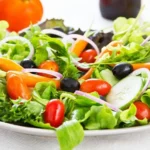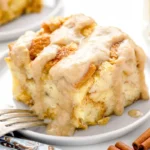
Peanut butter is more than just a delicious spread; it’s a beloved staple in kitchens across the globe, cherished for its rich flavor and versatility. Whether slathered on toast, blended into smoothies, or enjoyed as a filling for snacks, peanut butter has earned its place in the hearts (and stomachs) of many. But how much do you really know about this creamy (or crunchy) delight? From its historical origins to its surprising uses beyond the kitchen, peanut butter is packed with fascinating facts that highlight its unique journey and nutritional benefits. In this blog, we’ll explore 25 interesting facts about peanut butter that will not only satisfy your curiosity but also deepen your appreciation for this iconic food. Get ready to discover the secrets behind your favorite peanut butter jar!
Average Consumption: The average American consumes over six pounds of peanut products each year, which includes not only peanut butter but also peanut oil, peanut flour, and various snacks containing peanuts. This high consumption rate reflects the popularity of peanuts in American cuisine, particularly in snacks and desserts. Peanut butter, in particular, is a staple in many households, often found in lunchboxes and served in various recipes, contributing to its widespread use.
Historical Introduction: Peanut butter was first introduced at the St. Louis World’s Fair in 1904, where it gained significant attention as a novel food product. The fair showcased many innovations and products, and peanut butter was highlighted for its nutritional value and versatility. This event marked the beginning of peanut butter’s rise in popularity, leading to its commercialization and incorporation into American diets.
Gum Removal: Peanut butter can be used to remove gum from hair or shoes due to its oily texture. The oils in peanut butter help to break down the sticky substance of the gum, making it easier to remove without damaging hair or fabric. This household hack is popular among parents dealing with gum-related mishaps and showcases the practical uses of peanut butter beyond culinary applications.
Peanut Butter and Jelly Sandwich: The peanut butter and jelly sandwich is a classic American lunchtime staple, beloved for its simplicity and taste. This sandwich typically consists of two slices of bread spread with peanut butter and jelly or jam, offering a delightful combination of flavors and textures. It is not only convenient to prepare but also provides a quick source of energy, making it a favorite among children and adults alike.
Healthy Amount: The question of how much peanut butter is healthy can vary based on individual dietary needs. Generally, a serving size of peanut butter is considered to be about two tablespoons, which contains approximately 190 calories, 16 grams of fat, and 8 grams of protein. Moderation is key, as while peanut butter is nutrient-dense, it is also high in calories. Incorporating it into a balanced diet can provide health benefits, but excessive consumption may lead to unwanted weight gain.
Marinade for Meat: Peanut butter can be used as a marinade for meat, adding a rich, nutty flavor to dishes. When mixed with ingredients like soy sauce, garlic, and ginger, peanut butter creates a delicious marinade for chicken, beef, or tofu. This method not only enhances the flavor but also helps to tenderize the meat, making it a popular choice in various cuisines, particularly in Asian-inspired recipes.
Bait for Mouse Traps: Peanut butter can be used as bait for mouse traps due to its strong aroma and sticky texture, which makes it an effective lure for rodents. Its appealing scent attracts mice, increasing the chances of a successful catch. This practical application highlights peanut butter’s versatility beyond the kitchen, serving as a useful tool in pest control.
Elvis Presley’s Favorite: Elvis Presley was famous for his love of peanut butter and banana sandwiches, a quirky combination that became iconic. These sandwiches typically feature creamy peanut butter spread on bread with sliced bananas, sometimes grilled for added warmth and texture. This unique culinary preference reflects Presley’s indulgent lifestyle and has inspired many fans to recreate the dish, solidifying its place in pop culture.
Nutritional Benefits: Peanut butter contains healthy fats and is a good source of protein, making it a nutritious option for those looking to maintain a balanced diet. It is rich in monounsaturated fats, which are beneficial for heart health, and provides essential nutrients like magnesium, vitamin E, and potassium. These components contribute to overall well-being, supporting muscle function and providing energy.
Hair Conditioner: Peanut butter can be used as a hair conditioner due to its moisturizing properties. The natural oils and fats in peanut butter can help to nourish and hydrate dry hair, making it softer and more manageable. While this may sound unconventional, many people have found success in using peanut butter as a DIY hair treatment, although it should be thoroughly washed out afterward to avoid stickiness.
Peanut Count in Jars: There are approximately 540 peanuts in a 12-ounce jar of peanut butter, reflecting the number of peanuts needed to produce this popular spread. This statistic highlights the significant agricultural effort involved in peanut butter production and underscores the importance of peanuts as a crop in regions where they are cultivated.
Leather Shoe Shine: Peanut butter can be used to shine leather shoes due to its oily consistency, which helps to condition and restore the natural luster of leather. By applying a small amount and buffing it in, peanut butter can effectively remove scuffs and add shine. This creative use of peanut butter showcases its multifunctional properties beyond culinary applications.
Best Brand of Peanut Butter: Determining which brand of peanut butter is best can vary based on personal preference, dietary needs, and taste. Popular brands include Jif, Skippy, and natural options like Smucker’s and Justin’s, each offering different textures, flavors, and ingredients. Some consumers prefer creamy peanut butter for its smooth consistency, while others enjoy crunchy varieties that provide a bit of texture. Additionally, some brands offer organic or no-added-sugar options for those looking for healthier alternatives. Ultimately, the best brand is subjective and can depend on individual tastes and nutritional goals.
Origin of the Word “Peanut”: The word “peanut” comes from the African word “nguba,” which reflects the cultural significance of peanuts in various African societies. The term evolved as peanuts were introduced to different parts of the world, particularly during the transatlantic slave trade when they were brought to the Americas. This linguistic origin highlights the deep-rooted history and global journey of peanuts, showcasing their importance as a food source across cultures.
Source of Magnesium: Peanut butter is an excellent source of magnesium, a mineral that plays a crucial role in numerous bodily functions, including muscle and nerve function, blood sugar control, and bone health. A two-tablespoon serving of peanut butter contains about 49 milligrams of magnesium, contributing to the recommended daily intake for adults. Incorporating peanut butter into a balanced diet can help support overall health, particularly for those who may be at risk for magnesium deficiency.
Variety of Brands: There are over 30 different brands of peanut butter in the United States, reflecting the diverse preferences and dietary needs of consumers. This variety includes traditional brands, organic options, and specialty products such as flavored peanut butters. The competition among brands has led to innovations in flavors and formulations, allowing consumers to choose products that align with their tastes, health goals, and ethical considerations, such as sustainability and ingredient sourcing.
Filling for Celery or Apples: Peanut butter can be used as a filling for celery or apples, creating a nutritious and satisfying snack. This combination is often enjoyed for its balance of crunch and creaminess, providing a good source of protein and healthy fats. The pairing of peanut butter with fruits and vegetables not only enhances the flavor but also adds essential nutrients, making it a popular choice for kids and adults alike looking for healthy snack options.
Energy Source for Athletes: Peanut butter is a great source of energy for athletes due to its high-calorie content and combination of healthy fats and protein. This nutrient profile makes it an ideal fuel source before or after workouts, helping to sustain energy levels and support muscle recovery. Many athletes incorporate peanut butter into their diets, whether in smoothies, energy bars, or as a spread on whole-grain bread, to enhance their performance and recovery.
Largest Producer of Peanuts: The United States is the largest producer of peanuts in the world, with significant cultivation occurring in states like Georgia, Texas, and Alabama. The peanut industry plays a vital role in the agricultural economy, providing jobs and contributing to food production. The U.S. produces millions of tons of peanuts annually, which are used for various products, including peanut butter, snacks, and cooking oil, showcasing the crop’s versatility and importance.
Dog Treats: Peanut butter can be used to make dog treats, as many dogs enjoy the taste and it can be a healthy addition to homemade snacks. When creating dog treats, it’s essential to use unsweetened, unsalted peanut butter without xylitol, which is toxic to dogs. Peanut butter can be mixed with ingredients like oats or pumpkin to create nutritious and tasty treats that dogs love, making it a popular choice among pet owners for rewarding or training their pets.
Glue Substitute: Peanut butter can be used as a glue substitute in crafting or DIY projects due to its sticky and adhesive qualities. While it may not be as strong as commercial adhesives, it can work well for temporary fixes or children’s crafts. This alternative use highlights peanut butter’s versatility and can be a fun and creative way to engage in projects, especially for young children who may enjoy the process of using food as a crafting material.
Source of Vitamin E: Peanut butter is a good source of vitamin E, which is essential for skin health and acts as an antioxidant in the body. A two-tablespoon serving of peanut butter provides about 2.9 milligrams of vitamin E, contributing to the recommended daily intake. This vitamin plays a crucial role in protecting cells from oxidative stress and supports skin health by promoting moisture retention and reducing inflammation.
Largest Peanut Butter and Jelly Sandwich: The largest peanut butter and jelly sandwich ever made weighed over 1,342 pounds, showcasing the whimsical side of food competitions and record-setting events. This monumental sandwich was created in 2002 in Flatonia, Texas, and involved a team effort to assemble the enormous creation, which included a massive amount of bread, peanut butter, and jelly. The event not only highlighted the popularity of the peanut butter and jelly sandwich in American culture but also served as a fun community gathering, drawing attention and participation from locals and media alike.
Marketing as Healthy Food: In the early 1900s, peanut butter was marketed as a healthy food due to its high protein content and nutritional benefits. It was promoted as a meat substitute for those seeking affordable and nutritious options, particularly during times of economic hardship. This marketing strategy helped establish peanut butter as a staple in American diets, paving the way for its widespread acceptance and incorporation into various recipes and meals. The perception of peanut butter as a healthful option continues today, as many people recognize its benefits when consumed in moderation.
Peanut Butter and Constipation: The question of whether peanut butter is good for constipation can depend on individual dietary needs and responses. Peanut butter contains dietary fiber, which can aid in digestive health and promote regular bowel movements. However, it is also high in fat, and excessive consumption may lead to digestive discomfort for some individuals. For those looking to alleviate constipation, incorporating peanut butter in moderation as part of a balanced diet rich in fiber from fruits, vegetables, and whole grains can be beneficial. It’s always best to consult with a healthcare provider for personalized dietary advice.
FAQs about Peanut Butter:
1. What is peanut butter?
Peanut butter is a spread made from ground dry roasted peanuts. It is commonly used as a condiment for sandwiches, a dip for fruits and vegetables, and a key ingredient in many recipes. Peanut butter can be creamy or chunky, depending on the texture preference.
2. Is peanut butter healthy?
Peanut butter can be a healthy option as it is high in protein, healthy fats, and various nutrients, including vitamin E, magnesium, and potassium. However, it is also calorie-dense, so moderation is key. Choosing natural peanut butter without added sugars or hydrogenated oils is generally considered healthier.
3. Can you be allergic to peanut butter?
Yes, peanut allergies are among the most common food allergies, especially in children. Symptoms can range from mild (hives, stomach upset) to severe (anaphylaxis). If you suspect a peanut allergy, consult a healthcare professional for proper testing and advice.
4. How should peanut butter be stored?
Peanut butter should be stored in a cool, dry place. If it is natural peanut butter without preservatives, it is best kept in the refrigerator after opening to prevent oil separation and extend its shelf life. Commercial peanut butter can typically be stored in the pantry.
5. What are the different types of peanut butter?
There are several types of peanut butter, including:
- Creamy: Smooth texture, often preferred for spreading.
- Chunky: Contains small pieces of peanuts for added texture.
- Natural: Made from just peanuts and possibly salt, with no added sugars or oils.
- Flavored: May include ingredients like chocolate or honey for added taste.
6. Can dogs eat peanut butter?
Yes, many dogs enjoy peanut butter, and it can be a good source of protein and healthy fats for them. However, it should be given in moderation and should not contain xylitol, a sweetener that is toxic to dogs. Always consult your veterinarian before introducing new foods to your pet’s diet.
7. What can I substitute for peanut butter?
If you need a substitute for peanut butter, options include:
- Almond butter: Similar texture and taste with slightly different nutrients.
- Sunflower seed butter: A great nut-free alternative.
- Soy nut butter: Another nut-free option, made from roasted soybeans.
- Cashew butter: Creamy and slightly sweeter than peanut butter.
8. How can I use peanut butter in recipes?
Peanut butter can be used in various recipes, such as:
- Smoothies: Add a spoonful for creaminess and protein.
- Baking: Incorporate into cookies, brownies, or bars.
- Sauces: Mix with soy sauce and ginger for a tasty stir-fry sauce.
- Dips: Combine with yogurt or cream cheese for a savory dip.
9. Does peanut butter go bad?
Peanut butter can last a long time, but it can go bad. Look for changes in smell, taste, or texture, and check the expiration date. Natural peanut butter may have a shorter shelf life due to the absence of preservatives.
10. Is peanut butter vegan?
Most peanut butter is vegan, as it is made from peanuts and sometimes salt. However, it’s important to check the label for any non-vegan additives, especially in flavored varieties.








